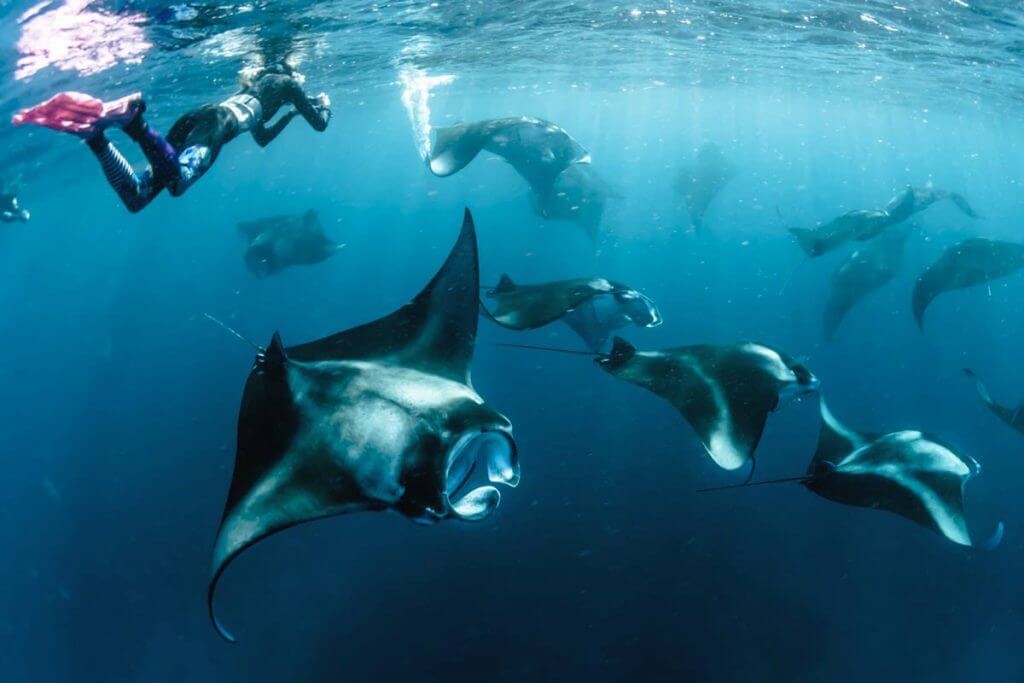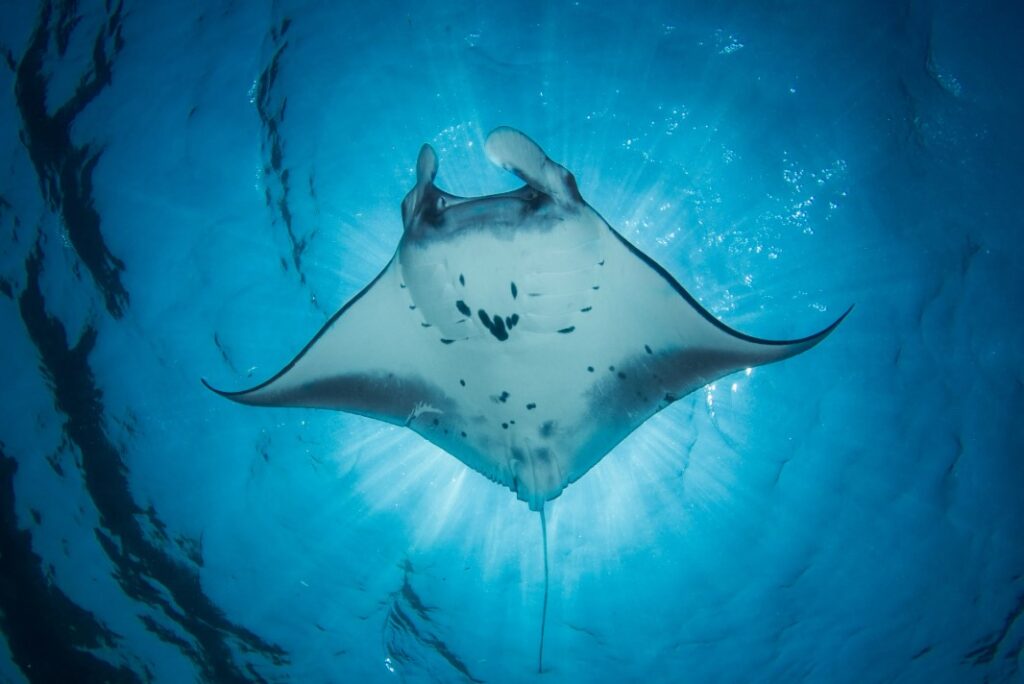Few experiences compare to gliding underwater beside a manta ray, its wings spanning several meters as it moves with a grace that feels almost otherworldly. In Komodo National Park, these encounters are not rare miracles but rather part of the diving rhythm.
If you’re planning a trip here, knowing when to go, where to dive, and how to prepare can transform your experience from memorable to unforgettable.
Why Komodo is the Best Place to Dive With Manta Rays
Komodo National Park, a UNESCO World Heritage Site, is a hotspot for marine biodiversity. Among its treasures, manta rays hold a special place. They frequent these waters year-round, but peak sightings happen when nutrient-rich currents sweep through, drawing plankton and, in turn, mantas. Unlike fleeting encounters elsewhere, in Komodo you can often witness dozens circling cleaning stations or feeding in shallow waters.
This predictability is what sets Komodo apart. The reefs are alive with color and fish activity, but the manta rays are the stars – gliding in loops, swooping above divers, and sometimes locking eyes for just long enough to make you forget to breathe.
When to Plan Your Dive Trip
Manta rays are present throughout the year, but seasons change the underwater landscape. Between December and February, plankton blooms peak, which attracts larger numbers of mantas. Visibility can be slightly lower due to the plankton, but this trade-off often means witnessing feeding frenzies.
From March through May and September through November, conditions are calmer with excellent visibility, making it easier for underwater photography. These months are also prime time for combining manta dives with encounters with turtles, reef sharks, and dazzling coral walls.
If your focus is strictly mantas, December through February is your best bet. If you want balanced diving with varied marine life, shoulder months work beautifully.
Choosing the Right Way to Dive Komodo
Many divers debate whether to stay on land and do day trips or commit to a liveaboard. While both work, a liveaboard or Komodo yacht charter allows you to reach remote dive sites early, before the crowds. It also provides a more immersive rhythm: waking up to the sound of waves, diving multiple times a day, and stargazing from the deck after dinner.
Land-based options from Labuan Bajo are more budget-friendly and still offer access to manta hotspots, but the travel time between dives is longer. If your budget allows, a yacht charter or liveaboard feels like the most seamless way to experience Komodo’s marine life.
Beyond the Dive ─ What Makes the Trip Special
Diving with mantas is the highlight, but Komodo offers much more. On surface intervals or rest days, you can trek Padar Island for its iconic viewpoints, relax on Pink Beach, or even meet the Komodo dragons that gave the park its name. This mix of marine and terrestrial adventure makes the trip a full experience, not just a dive holiday.
Cultural immersion in Labuan Bajo also adds texture to your journey. Fresh seafood, bustling markets, and sunset bars along the harbor round out the evenings. It’s the perfect reminder that diving is only one layer of Komodo’s appeal.

Final Thoughts
Diving with manta rays in Komodo isn’t just about the wildlife; it’s about surrendering to an environment where nature takes the lead. Whether you see one solitary manta soaring through the blue or dozens spiraling at a cleaning station, the experience leaves an imprint that lasts long after the dive. Komodo remains one of the few places where such encounters feel both accessible and extraordinary, making it a must for divers who crave moments that feel both humbling and awe-inspiring.







